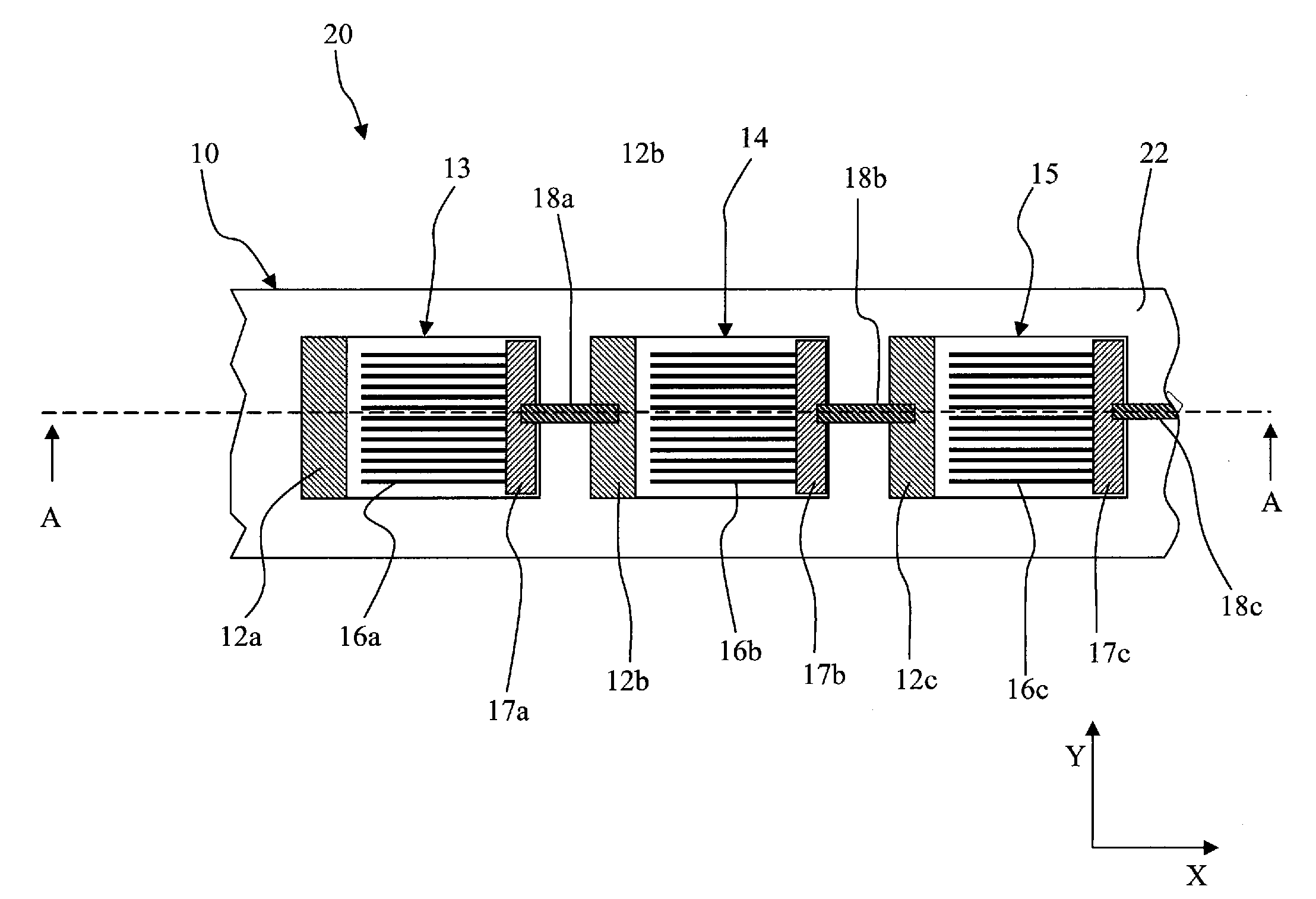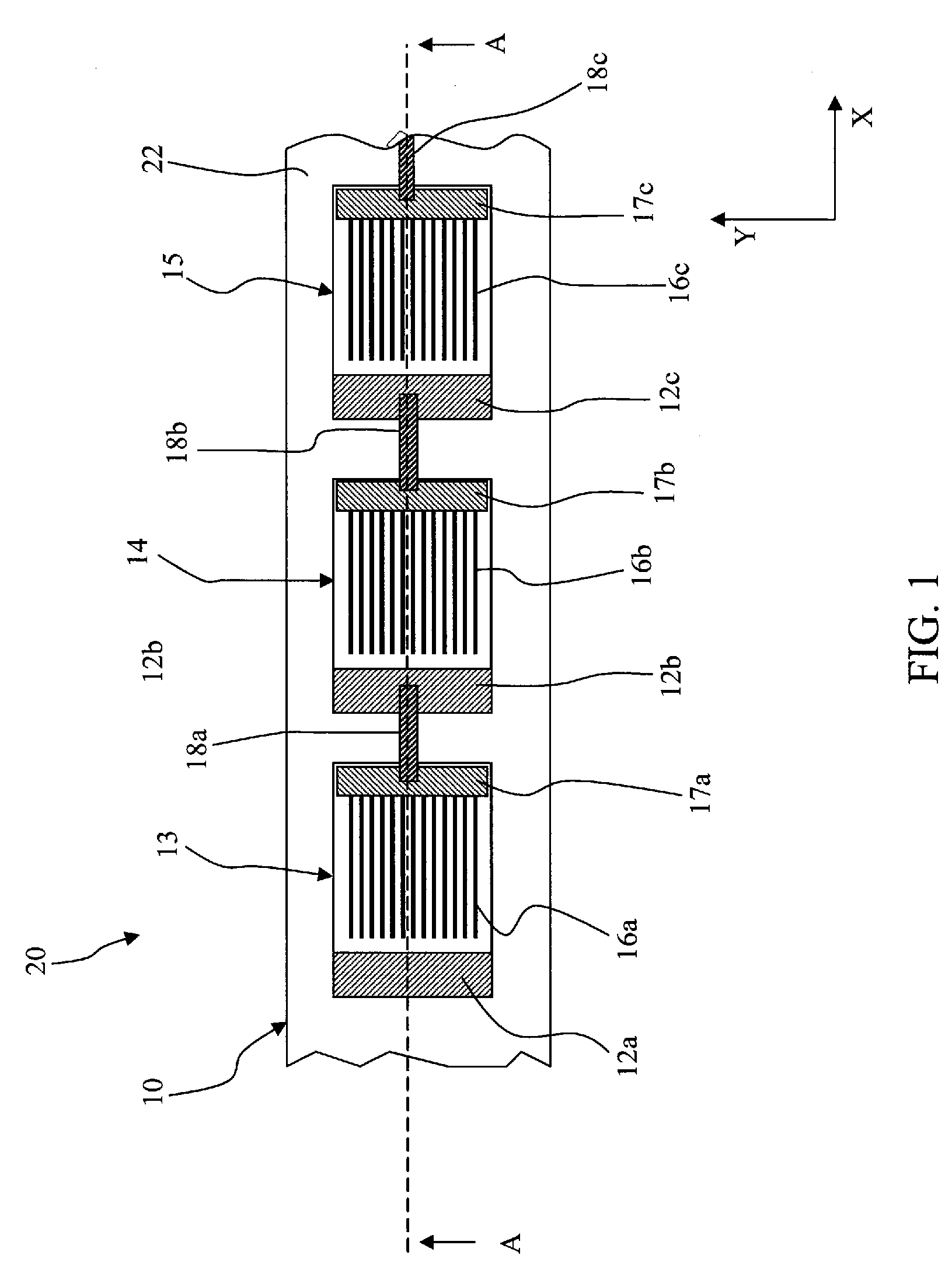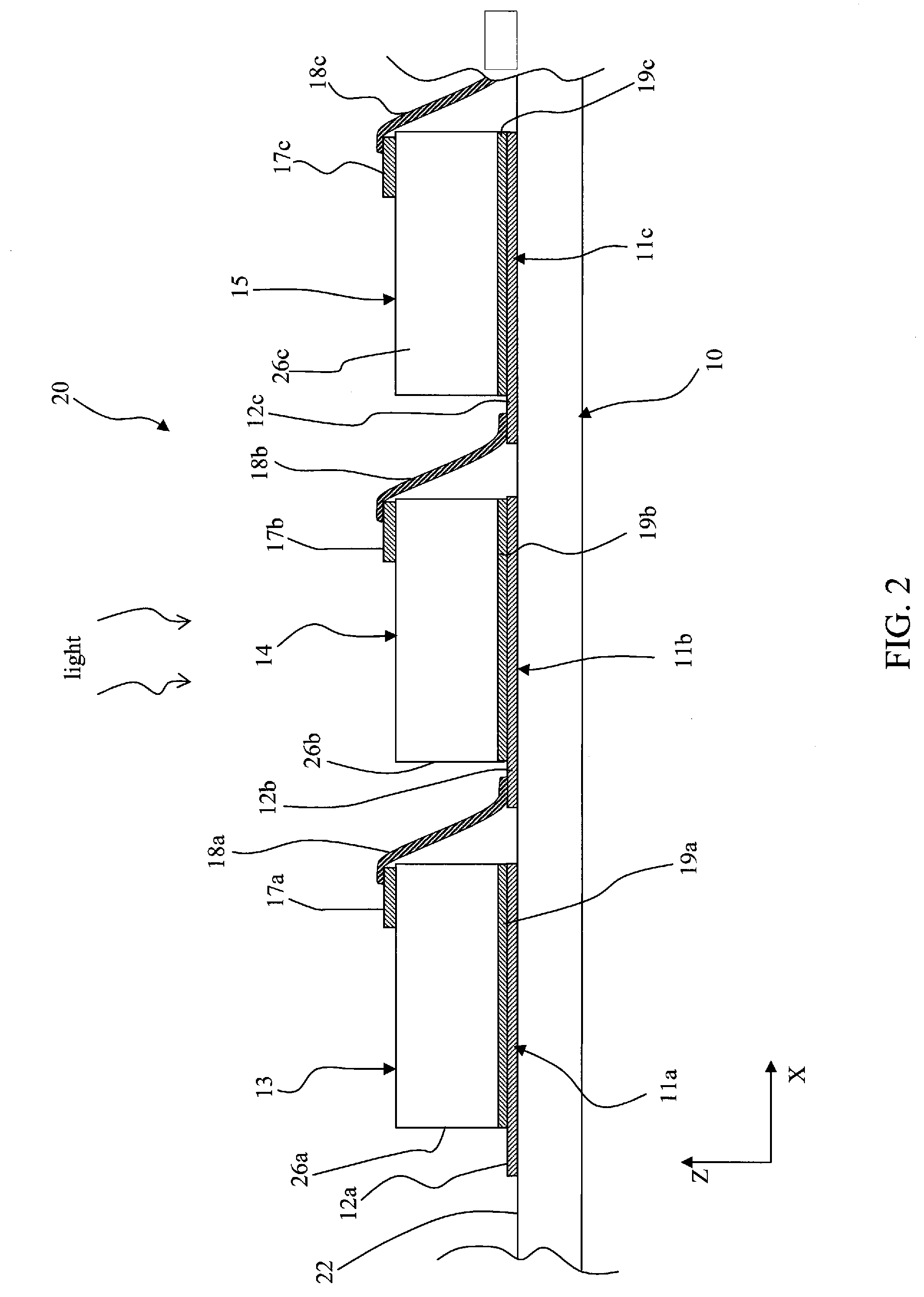Solar Cell Interconnection on a Flexible Substrate
a flexible substrate and solar cell technology, applied in the field of solar cell arrays, can solve the problems of high-power density solar modules to be used, and achieve the effect of high packing density
- Summary
- Abstract
- Description
- Claims
- Application Information
AI Technical Summary
Benefits of technology
Problems solved by technology
Method used
Image
Examples
Embodiment Construction
[0021]FIGS. 1 and 2 illustrates, respectively, a partial plan view and a cross-sectional view of a solar cell array arranged on a common flexible substrate and comprising a plurality of individual solar cells electrically interconnected. As used herein, the term “plurality” indicates “at least two”, and typically much larger than two (e.g., 50 to 100), where the number of individual cells in the array can widely vary depending on the application and on the output power required from the array. For simplicity, three individual solar cells 13, 14 and 15 of solar cell array 20 are illustrated in FIGS. 1 and 2. The cross-sectional view illustrated in FIG. 2 is taken along line A-A of FIG. 1 of the longitudinal “X” direction indicated in the figures and representing the main direction of arrangement of the solar cells in the array.
[0022]The solar cell array 20 can be part of a photovoltaic module, namely a packaged interconnected assembly of solar cells comprising one or more solar cell ...
PUM
| Property | Measurement | Unit |
|---|---|---|
| thickness | aaaaa | aaaaa |
| length | aaaaa | aaaaa |
| length | aaaaa | aaaaa |
Abstract
Description
Claims
Application Information
 Login to View More
Login to View More - R&D
- Intellectual Property
- Life Sciences
- Materials
- Tech Scout
- Unparalleled Data Quality
- Higher Quality Content
- 60% Fewer Hallucinations
Browse by: Latest US Patents, China's latest patents, Technical Efficacy Thesaurus, Application Domain, Technology Topic, Popular Technical Reports.
© 2025 PatSnap. All rights reserved.Legal|Privacy policy|Modern Slavery Act Transparency Statement|Sitemap|About US| Contact US: help@patsnap.com



